Welcome visitor you can
login or register Phone Orders 888-212-8871
Description
NutriTRALA Alpha Lipoic Acid LA Long-Acting Singlet Oxygen Radical and Hemoglobin A1C Diabetic Glycation Blood Marker Reducer
Common Uses:
Clinical Applications
NutriTRALA
Remove Singlet Oxygen Radical Lower HBA1C Glycosylated Hemoglobin Marker
Discussion
NutriTRALA, is a potent oxidative stress antagonist, is a proprietary, orally active, controlled-release formulation of racemic a-lipoic acid (containing both R and S-enantiomers) that has a pharmacokinetic advantage over other alpha lipoic acid formulas. Other brands are rapidly cleared from the plasma within about 30 minute; whereas, NutriTRALA remains in the plasma for several hours.1
* Neutralizes Oxygen Radicals, Ionized Metals and a Variety of Other Free Radicals
* Coenzyme for Whole Body Glucose Utilization
* Increases Intracellular Glutathione Levels Reduced by Aging, Diseases, Moderate/ Strenuous Exercise
* Reduces Oxidative Stress that Leads to Diabetic Neuropathy, etc.
* Regenerates Vitamins C&E and Maintains Balance between Oxidized & Reduced CoQ10
Alpha-Lipoic acid (ALA) is an eight-carbon disulfide water- and fat-soluble compound that is synthesized in small quantities in the liver and other tissues. Orally supplementation readily crosses the blood brain barrier after it is absorbed in the small intestine, goes into the portal vein and is distributed via systemic circulation. Once in the tissues ALA can be found inside and outside the cells including inside the mitochondria where it functions naturally as a coenzyme for the oxidation of pyruvate, alpha ketoglutarate and branched-chain amino acids.
Researchers recently identified lipoic acid?s mechanisms of action in metabolic syndrome?related conditions. It has a direct binding site at the insulin receptor tyrosine kinase domain giving it potential as a model substance for the development of insulin mimetics. ALA appears to modulate 5?-AMP-activated protein kinase and PPAR-regulated genes, to activate PPAR?alpha and PPAR-gamma and to upregulate expression of PPAR-gamma mRNA and protein in heart tissue and smooth muscle of the aorta.2
Controlled-release technology improves the efficacy of alpha-lipoic acid in blood sugar management. Data from a 12-week clinical study in patients with type 2 diabetes indicate that supplementation with NutriTRALA (1200 mg per day, divided doses as add-on therapy with other anti-hyperglycemic medications) results in a significant reduction of plasma fructosamine, along with a trend towards reduced C-peptide, an indication of increased insulin sensitivity.3,4 Complications of diabetes and decreased insulin sensitivity may be the result of oxidative stress. α-Lipoic acid is a natural antioxidant that effectively neutralizes a variety of free radicals, including oxygen radicals and ionized metals.
It increases tissue levels of glutathione, typically reduced in a variety of diseases, with aging and during moderateto- strenuous exercise. α-Lipoic acid regenerates vitamins C and E, and helps maintain the proper ratio of reduced to oxidized coenzyme Q10 in the mitochondria. It helps repair oxidized proteins, preventing DNA damage. In addition, alpha lipoic acid has metal-chelating activity.
In Germany, ALA is approved as a drug for diabetic/alcoholic neuropathies and liver disease. A comprehensive review of the clinical studies on LA in the treatment of diabetic neuropathy has been published.5 Impairment of endothelial-mediated vasodilation is accepted as a surrogate marker for the eventual development of CVD.
The cause may be decreased synthesis, bioavailability or action of nitric oxide (NO). Increased oxidative stress appears to play a significant role in neutralizing or inactivating NO. ALA?s antioxidant properties, along with its demonstrated safety and potency qualify it as a prime candidate to evaluate for its ability to improve endothelial dysfunction.6 The ability of α-lipoic acid to improve energy metabolism and decrease oxidative stress is alludes to its ability to at least partially reverse the decline in mitochondrial function and increase in oxidative stress associated with normal aging.
Biotin has been added because chronic administration of lipoic acid lowers the activities of pyruvate carboxylase and betamethylcrotonyl- CoA carboxylase in vivo by competing with biotin.7
References
1. Teichert J, Kern J, Tritschler HJ, Ulrich H, Preiss R: Investigations on the pharmacokinetics of alpha-lipoic acid in healthy volunteers. Int.J.Clin.Pharmacol.Ther. 36:625-628, 1998
2. Pershadsingh HA. Alpha-lipoic acid: physiologic mechanisms and indications for the treatment of metabolic syndrome. Expert Opin Investig Drugs. 2007 Mar;16(3):291-302 [PMID: 17302524]
3. Evans JL, Goldfine ID: a-Lipoic acid: a multi-functional antioxidant that improves insulin sensitivity in patients with type 2 diabetes. Diabetes Technol Therap 2:401-413, 2000
4. Jacob S, Ruus P, et al. Oral administration of RAC-alpha-lipoic acid modulates insulin sensitivity in patients with type 2 diabetes mellitus: a placebo-controlled pilot trial. Free Radic Biol Med 27:309-314, 1999
5. Ziegler D, Reljanovic M, Mehnert H, Gries FA. Alpha-lipoic acid in the treatment of diabetic polyneuropathy in Germany: current evidence from clinical trials. Exp Clin Endocrinol Diabetes 107:421-430, 1999
6. Bojunga J, et al. Antioxidative treatment reverses imbalances of nitric oxide synthase isoform expression and attenuates tissue-cGMP activation in diabetic rats. Biochem Biophys Res Commun. 2004 Apr 9;316(3):771-80 [PMID: 15033467]
7. Zempleni J, Trusty TA, Mock DM. Lipoic acid reduces the activities of biotin-dependent carboxylases in rat liver. J Nutr. 1997 Sep;127(9):1776-81 [PMID: 9278559]
8. Foster TS. Efficacy and Safety of {alpha}-Lipoic Acid Supplementation in the Treatment of Symptomatic Diabetic Neuropathy. Diabetes Educ. 2007 Jan-Feb;33(1):111-7 [PMID: 17272797]
9. Alpha Lipoic Acid. www.naturaldatabase.com {accessed 3.06.07}
10. Diesel B. et. al. alpha-Lipoic Acid as a Directly Binding Activator of the Insulin Receptor: Protection from Hepatocyte Apoptosis. Biochemistry. 2007 Feb 27;46(8):2146-2155. Epub 2007 Feb 3 [PMID: 17274632]
Instructions/How to Use:
Take two tablets 30 minutes before breakfast and 1 tablet 30 minutes before dinner.8
Reference above in Common Uses and Benefits
Ingredients:
Long Acting T1/2 Half Life 105 minutes – SUPER – Alpha Lipoic Acid 800 mg
Cautions/Warnings:
Whether taken alone, or in combination with other anti-hyperglycemic medications, NutriTRALA is well tolerated and does not produce alterations in liver or kidney function.
There are some theoretical interactions with medications; please consult an appropriate information source.9
Conditions:
ANTIAGING REJUVENATION WELLNESS SUPPORT
Lou Gehrig’s Disease AMYOTROPHIC LATERAL SCLEROSIS ALS NO/OONO TH1/TH2
BREAST HEALTH AND TENDERSON PROTECTION PROTOCOLS
CFS CHRONIC FATIGUE SYNDROME INTRACELLULAR PATHOGE
CHOLESTEROL NATURAL NORMALIZING & REDUCTION
DOWNS SYNDROME Gene Doses & Support Protocols
ENERGY FATIGUE ATHLETIC PERFORMANCE SUPPORT
HEADACHE & MIGRAINE Natural Recovery Protocol
Heart Arrythmias and Palpitations ATRIAL FIBRILLATION
MERCURY AND HEAVY METALS, MERCURY, LEAD, DU & TOXIC CHEMICALS DETOXIFICATION MERC
MORGELLONS FILAMENTOUS MYCOBACTERIAL SKIN AND SYSTEMIC PATHOGENS
Tooth Infection / Periodontal Gum Disease Plaque Protocol Osteomyelitis of Jaws
Skin and Hair Antiaging and Wrinkles Rejuvenation Protocols
VISION EYE CATARACT AND RETINAL DEGENERATION AND MACULAR GLUCOMA SUPPORT
Only logged in customers who have purchased this product may leave a review.
Related Products
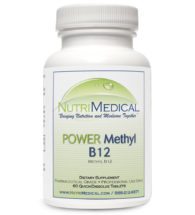
POWER METHYL B12 Sublingual
$45.00
Select options
This product has multiple variants. The options may be chosen on the product page
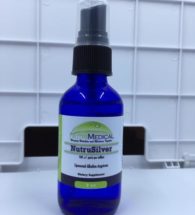
NutruSilver Spray
$39.95
Select options
This product has multiple variants. The options may be chosen on the product page
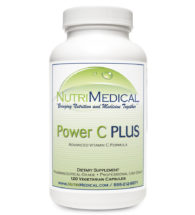
POWER C PLUS
$39.95
Select options
This product has multiple variants. The options may be chosen on the product page

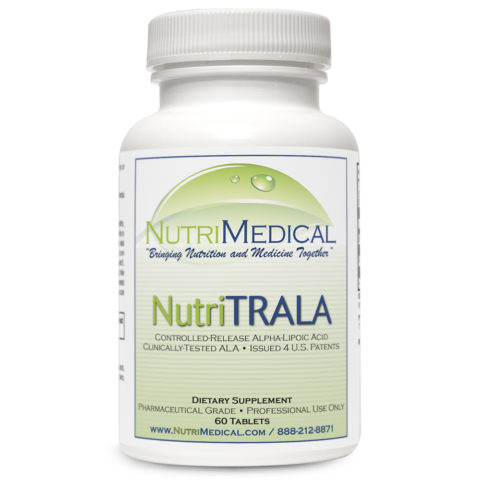
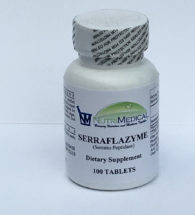
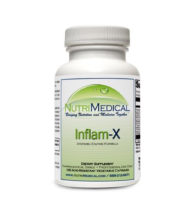
Reviews
There are no reviews yet.